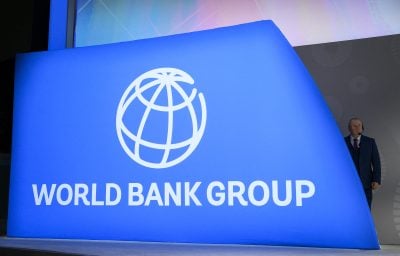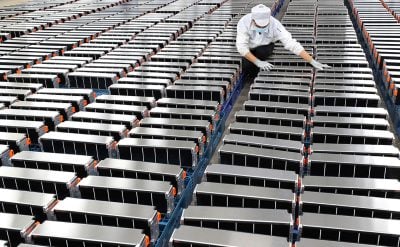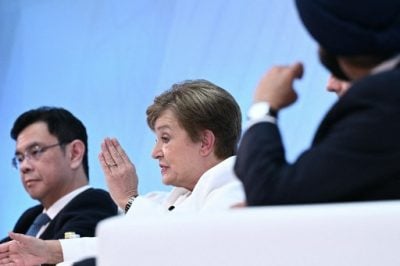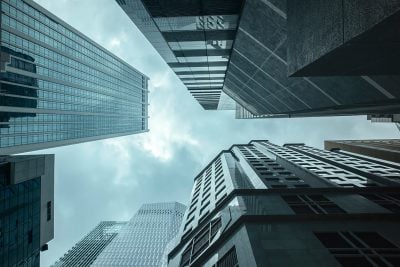The DR Congo’s Inga Dam (above) dream is back. The pet project of the country’s infamous former dictator Mobutu Sese Seko to build a series of dams to harness the power of the formidable Congo River was unceremoniously sunk in the 1990s in the storm of neglect and violence that engulfed the country. However, it has remained a fierce symbol of Africa’s untapped resource-based potential and new investors are keen to pull the dream from the dregs of the Congo’s river bed.
In December 2011, Laurent Kabila, the President of DR Congo, signed a Memorandum of Understanding with his South African counterpart, Jacob Zuma, to build a Grand Inga Dam on the Congo River. The aim is to make the Dam operational by 2025. Zuma tapped into the almost legendary status of the project in the African collective consciousness during his speech after he signed the agreement, when he described the event as “a day to prove Afro-optimists right”.
That the Inga Dam creates such intense excitement is no surprise. If its construction was successful, it would constitute the most powerful dam in the world, producing twice as much electricity as the Three Gorges Dam in China. It would also theoretically be able to boost Africa’s electricity reserve by a third and help Africa to fulfil its largely unexploited potential in the production of hydropower.
This is an important revelation – the African Development Bank states that hydropower makes up almost half of power generation potential in Africa, but only 4% of this is currently being harnessed.
A detailed plan is yet to be finalised; the project is still in its feasibility stages and the MOU outlines that a formal treaty, to include a detailed planning and implementation strategy, will be concluded in six months. However, it is clear that it will entail the rehabilitation of the Congo River’s two existing dams, Inga I and Inga II, which currently operate at a relatively low output level of 1,775MW; the creation of a third dam to harness an output of 3,500MW; and the construction of a Grand Inga Dam, which will generate an average power output of 39,000MW.
It is likely that the project will be managed by the South African and Congolese state bodies, and that construction contracts and agreements for stakes in the electricity produced will be auctioned to foreign companies.
However, the successful implementation of the project is far from guaranteed. The most formidable obstacle by far is finance. Construction of the dam is estimated to cost an eye-watering $80bn. The dam will also require significant and consistent flows of capital after construction for its upkeep; the main reason for the failure of the previous Inga Dam projects is that no money was spent on their upkeep and they quickly fell into disrepair.
Although South Africa has long been a champion of the Inga Dam vision as part of its wider aim to create a new role for Africa as a leader in hydroelectric power, supplying much of Europe and the Middle East, the price tag is too heavy for the country to realistically contemplate; it is equivalent to two thirds of the estimated cost of the country’s nuclear programme.
Some experts have therefore suggested that South Africa, fully aware that it cannot fund the project alone, actually hopes that their backing will confer international legitimacy on the venture, attracting further funding from other sources.
Foreign investment warming up
Indeed, foreign investment is starting to warm up. The World Bank, African Development Bank and European Investment Bank have all expressed their intention to invest and a number of foreign energy companies have also committed their support. However, it is clear that the dam will have to attract far more investment excitement if it is to get off the ground. One particularly curious question, which has yet to be discussed in any serious detail, is whether the venture will attract Chinese investment.
The question of potential Chinese investment in the future is a logical one. China is spearheading investment in the continent’s hydroelectric sector. It has direct experience of dam-building ventures in Ethiopia, where it is assisting with the construction of the Gibe III.
China is also famed for building what is one of the world’s largest dams, the Three Gorges, which took 14 years to build at a cost of $180bn. Nonetheless, whether any form of foreign capital will be forthcoming, Chinese or otherwise, depends on the outcome of various assessments which energy companies are currently undertaking to evaluate the viability of the site’s development.
Another formidable challenge to the project is the pervasive political instability, which continues to grip the country. Some experts fear that the dam could be vulnerable to sabotage or seizure by rebel groups.
The seizing of natural resources by oppositional groups to gain leverage and autonomy against the government continues to be a common theme in the country’s eastern region. It is also worth noting that rebels have captured dams before – in 1998, rebels seized part of Inga II and proceeded to cut off the power supply in Kinshasa during fighting against Mobutu. There is no guarantee that political turmoil in Congo would not lead to similar situations occurring with the Grand Inga Dam. Indeed, the perpetual violence in the Eastern Kivu region and controversial denouement of the political elections, which have been marred by allegations of electoral fraud, violence and the main opponent disputing the outcome, are bitter warnings of the continued fragility of the country’s politics.
Observers have also raised questions about some of the potential negative effects of the plans. Political commentators have suggested that the resultant centralisation of power in the dam region could stoke tensions and even spark conflict. Others contend that in a country which is already riddled by corruption, a rapid and abrupt influx of foreign investment will cause widespread malpractices over contracts and tender.
Slew of criticisms
Environmentalists have also criticised the plans for failing to take potential ecological repercussions into consideration. Although the number of diversions and barriers that the construction will entail is not yet known, the effect on methane emissions, local river ecology and riverine forests, as well as the likelihood of droughts and floods, needs to be carefully considered. Unfortunately, the treatment of local communities by the government betrays the unwillingness of the Congolese authorities to take local concerns about the dam seriously. It is estimated that 9,000 residents of local communities would have to be moved to commence construction but no provisions for compensating them in such an event have been articulated.
Given that communities are still trying to claim compensation after being forcibly displaced to make way for Inga I and Inga II up to 40 years on, this is likely to cause some concern as the plans for the project develop.
There are signs that the government is already working to dampen opposition – local awareness of the plans is said to be deliberately kept to a minimum and some claim that residents are afraid to express their concerns to the authorities.
Moreover, local NGOs have been systematically excluded from conferences and meetings on the project in recent years. Observers charge that if the dam can be taken seriously as a professional and responsible business venture, interactions with concerned or affected parties will have to be more productive.
Finally, observers have raised doubts about the extent to which the dam would actually benefit Africa. The Congolese government has not expressed any intention to connect the energy from the dam to the national grid. Given that the fruition of the project will rely on foreign investors, it is almost certain that the majority of the resultant energy will end up being transported out of Africa.
Furthermore, even if the government did decide to supply the country with further electricity through the project, the centralised nature of the grid and the extensive cost involved in expanding it means that the benefits would be unlikely to extend to rural areas.
The Inga Dam dream is some way off and faces severe challenges. Making it a reality will require intense levels of capital from wealthy and experienced companies and governments that can stomach the risk; relative political stability in the Congo; and a responsible and ethical business approach from both Congolese and foreign partners. Whether these crucial ingredients will be forthcoming remains to be seen.
Want to continue reading? Subscribe today.
You've read all your free articles for this month! Subscribe now to enjoy full access to our content.
Digital Monthly
£8.00 / month
Receive full unlimited access to our articles, opinions, podcasts and more.
Digital Yearly
£70.00 / year
Our best value offer - save £26 and gain access to all of our digital content for an entire year!
 Sign in with Google
Sign in with Google 


